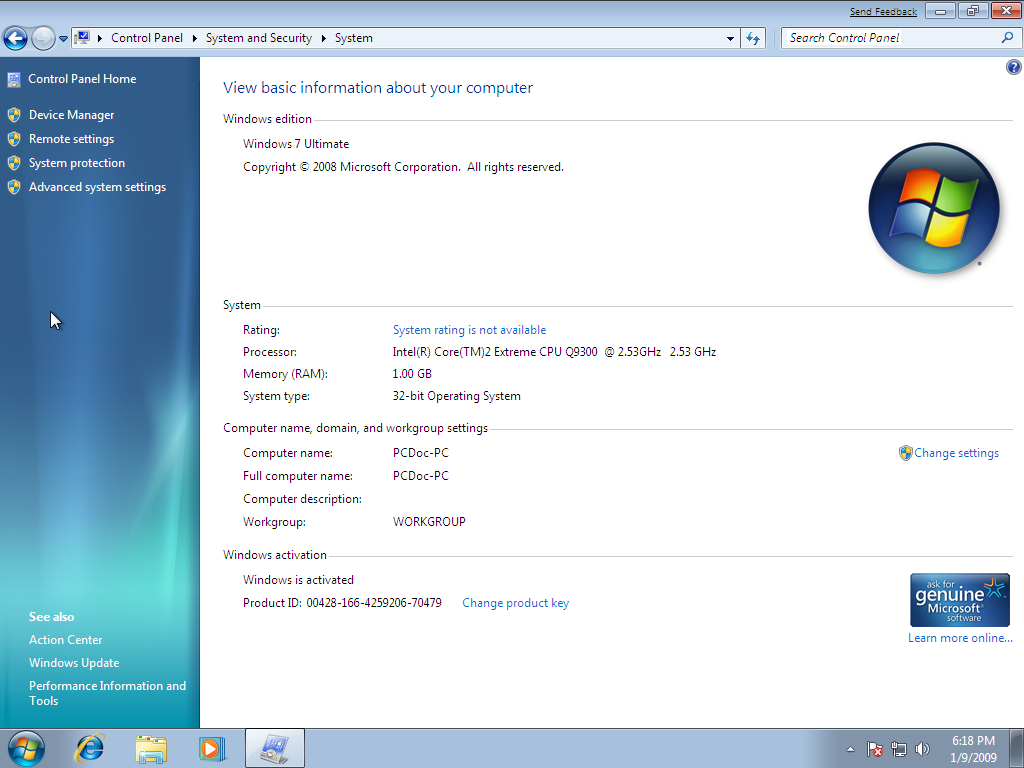

- #Reducing windows 7 ultimate backup size full
- #Reducing windows 7 ultimate backup size code
- #Reducing windows 7 ultimate backup size plus
Should you buy R-Drive Image?Īs I said, I came close to awarding R-Drive Image 7.1 a 5-star rating. Note that I tested a pre-release version of 7.1. Add those and I’m thinking it gets another half star. While R-Drive Image offers just about every option and feature you can think of for local and network use, I’d still lobby for multiple-destinations per job and support for online storage services. Yes, the company is that dedicated and responsive. It was non-fatal, which indicates superior error-checking, and R-Tools shipped me a fix (build 7001) almost immediately.
#Reducing windows 7 ultimate backup size code
Oddly enough, I did get my first-ever R-Drive Image error code with version 7.0 (7000 build) when selecting the modify function of the partition manager on an external, exFAT-formatted USB drive. Note that the company’s R-Studio supports Apple Silicon, so perhaps there’s ARM support in R-Drive Image’s future. I wrote most of this article with a very large backup running on my 2015 iMac (running Windows via Boot Camp) and forgot it was in progress. If you’re using older hardware, R-Drive Image is by far your best bet. The minimum system requirement is only that the CPU be Intel-based.

When I say R-Drive Image consumes few resources, I’m not kidding. I’ve never seen a job-failed message unless the hard drive was beyond hope. R-Drive Image 7.1 complete s its multi-partition backup task successfully. It understands Microsoft’s FAT (16/32), NTFS, and exFAT formats Apple’s HFS/HFS+, and APFS as well as the Little and Big Endian variants of UFS1/UFS2 and Ext2/Ext3/Ext4 FS (Linux), and ReFS. It will also verify them, copy disk-to-disk (cloning), and mount images as virtual disks that you can browse and recover individual files and folders from.
#Reducing windows 7 ultimate backup size full
R-Drive Image will create full (all data), incremental (all data changed since the last image), or differential (all data changed since the original full image) images. But, hey, R-Tools, if you’re ever bored…. Honestly, I can’t be too sore about the omission, as porting it to the older DOS-like GUI would likely be a lot of work. Alas, the new partitioning facilities are only available from the modern GUI.
#Reducing windows 7 ultimate backup size plus
Below you can see the older version (upper left), as well as the new one (bottom), plus my personal favorite: the character-based interface that I use to intimidate customers looking over my shoulder.Ĭlockwise from upper left: R-Drive Image’s old Windows/Linux boot interface, the still existent character-based interface from the Linux boot disk, and the latest Windows/Linux boot GUI.īoth the new GUI and DOS-like interfaces are available from the Linux boot disc, however the WinPE version features the new GUI only. The current GUI not only has a more modern look, the workflow should be a tad more intuitive to the average user. The old version was efficient, but dated in appearance. R-Drive Image maintains the new interface that was introduced with version 7.0. Lastly, there is a new option to check multiple images for errors with a single command.

AES-XTS image encryption is now supported and you can also resize the C: (OS) partition without having to reboot afterwards. I’ve never had the need, but some systems boot better using one or the other. There’s also now the option to convert partition layouts from MBR (Master Boot Record) to GPT (GUID Partition Table) and vice versa. The Windows Pre-install Environment (Windows 10) may offer some Windows-only drives not available from Linux and allow booting on some systems with Secure Boot enabled in the BIOS. The other major good news for Windows users is the addition of a WindowsPE boot disc. R-Drive Image now supports both Linux and Windows PE boot media.


 0 kommentar(er)
0 kommentar(er)
